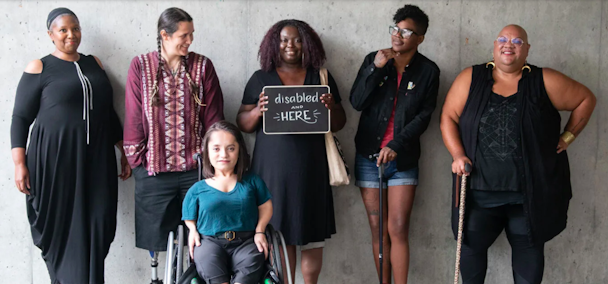The making of ‘We The 15’, the 10-year campaign to make disability ordinary
The Paralympic Games turn the world’s eyes to the achievements of the superhuman athletes that take part, but the reality is that the vast majority of the millions of disabled people are distinctly ordinary. That recognition – and the desire to have the ordinariness of disability acknowledged by the public – lies behind Adam & Eve DDB’s ’We The 15’ campaign, the name of which references the 15% of the global population who are disabled.

The campaign launch is timed to coincide with the Paralympic Games
The genesis of the campaign came from a recognition that while strides have been made in representation, disabled people are still marginalized. Sarah Benson was strategy director for the campaign, and says: “A lot of comparisons and parallels were getting drawn to the Black Lives Matter movement and, to some extent, Extinction Rebellion. That was the size of their ambition and they’re absolutely right that that should happen.”
As a result, the International Paralympic Committee and the World Health Organization have worked with Adam & Eve DDB on a 10-year-long campaign to redress that imbalance. At the core of the campaign is the recognition that without better representation in front of and behind cameras, no progress will be made.
Benson says the plan for the ’We The 15’ campaign, which has its second major push coming next week at the launch of the Paralympics, pivoted away from anger at the injustice early on: “The original plan was to showcase atrocities faced by people with disabilities around the world, but we slowly realized that anger is a Teflon strategy – it doesn’t stick. It was too big. It was too heavy. It just wasn’t going to actually change behavior at all. So we went back to the drawing board and spoke to lots and lots of people with disabilities from around the world.”
An ordinary extraordinary campaign
The resulting campaign based on those interviews highlights that because over a billion people live with disabilities, it is actually extremely ordinary. It aims to correct the overly simplistic views the general public often hold.
“We have this really long spectrum of absolute binaries, which is all perpetuated ableism. Somebody said: ‘I don’t want you to pay that much attention to me, I just want the same shitty life that you all have.’ We realized that the strategy had to be ‘ordinariness’.
“So the brief was written with one word – ‘unspecial’. Then, the question was, how do we make an interesting campaign about the most boring, mundane universality possible, because it wasn’t about people’s bodies or achievements or failures?”
Due to the size and planned length of the campaign, a number of organizations are taking part in various capacities, including the United Nations, the World Bank, the International Disability Foundation and the Invictus, Olympic and Paralympic Games.
“It had to include all of those players that have a very distinct set of expertise, from human rights to how we address healthcare issues through to how we actually change taxation in countries where it’s a million pounds to get a pair of glasses.”
Despite the 2030 target and acknowledgement it will take a while to change public perception of disabilities, Benson says the goal of launching alongside the Paralympics is to create a “little bit of fomo”. She says the strategy is designed to bed in that message over time, and while the Paralympics act as the starting gun for the campaign, it will eventually morph over time into more of a “relay” as the message continues.
Content created with:

Adam&EveDDB
Find out more
